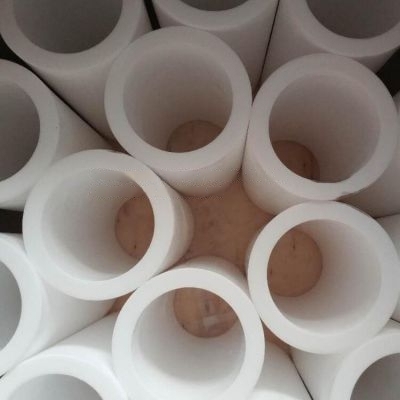The Versatility of PVDF: Exploring PVDF Tubes, Sheets, and Rods
Introduction
Polyvinylidene fluoride, commonly known as PVDF, is a high-performance polymer that has gained widespread popularity due to its exceptional properties. PVDF is renowned for its excellent chemical resistance, UV stability, and electrical insulation properties, making it a preferred material for various industrial applications. In this blog post, we will delve into the world of PVDF and explore the performance and applications of three key products: PVDF tubes, PVDF sheets, and PVDF rods.
PVDF Tubes: Versatile and Resilient
PVDF tubes are a staple in many industries, thanks to their exceptional chemical resistance and mechanical properties. They are often used in applications where corrosive substances are present, as PVDF is highly resistant to acids, bases, and solvents. Let’s take a closer look at the performance and applications of PVDF tubes:
- Chemical Resistance: PVDF tubes exhibit outstanding chemical resistance, making them ideal for conveying and handling aggressive chemicals. They are commonly used in the chemical processing industry, where they help prevent corrosion and ensure the safe transport of various liquids and gases.
- Temperature Stability: PVDF tubes maintain their integrity across a wide temperature range, from -40°C to 150°C. This thermal stability makes them suitable for applications involving extreme temperatures, such as in the oil and gas industry.
- UV Resistance: PVDF tubes are UV-resistant, making them an excellent choice for outdoor applications. They can withstand prolonged exposure to sunlight without degradation, making them ideal for use in solar energy systems and outdoor piping.
- Electrical Insulation: PVDF’s excellent electrical insulation properties make PVDF tubes invaluable in the electronics industry. They are used for insulating wires, cables, and connectors, ensuring the safe and reliable performance of electrical components.
PVDF Sheets: Durability and Aesthetics
PVDF sheets offer a unique combination of durability and aesthetics, making them a popular choice for architectural and construction applications. Here’s a closer look at their performance and applications:
- Durability: PVDF sheets are highly durable and can withstand harsh weather conditions, making them an excellent choice for outdoor cladding, roofing, and facades. They are resistant to fading, cracking, and peeling, ensuring a long-lasting and visually appealing finish.
- Chemical Resistance: Just like PVDF tubes, PVDF sheets are chemically resistant, making them suitable for applications where exposure to chemicals and pollutants is a concern. This makes them a preferred material for chemical storage tanks and protective barriers.
- Easy Maintenance: PVDF sheets are easy to clean and maintain, making them a practical choice for architectural applications. Their smooth surface allows for effortless cleaning, ensuring that buildings and structures maintain their aesthetic appeal.
- Color Options: PVDF sheets are available in a wide range of colors and finishes, allowing architects and designers to achieve their desired aesthetic effects. This versatility makes them a popular choice for cladding in commercial and residential buildings.
PVDF Rods: Precision and Strength
PVDF rods are known for their precision and strength, making them indispensable in mechanical and engineering applications. Let’s explore their performance and key applications:
- Mechanical Strength: PVDF rods possess excellent mechanical strength, which makes them suitable for applications that require high levels of precision and dimensional stability. They are commonly used in the manufacturing of bearings, seals, and gears.
- Low Friction Coefficient: PVDF’s low friction coefficient makes PVDF rods an ideal choice for applications involving moving parts. They reduce wear and friction, leading to longer-lasting and more efficient mechanical systems.
- Resistance to Wear and Tear: PVDF rods are highly resistant to wear and tear, making them valuable in industries such as automotive and aerospace. They can withstand the rigors of demanding environments and ensure the reliability of critical components.
- FDA Approval: PVDF is FDA-approved for use in food and beverage processing equipment. This certification highlights its safety and suitability for applications where contact with food is necessary.
Conclusion
PVDF is a remarkable polymer that offers a wide range of benefits, from chemical resistance and UV stability to electrical insulation and mechanical strength. PVDF tubes, sheets, and rods each have their unique performance characteristics, making them suitable for a diverse array of applications across various industries. Whether you need to convey corrosive chemicals, clad a building, or manufacture precision components, PVDF products are likely to provide the ideal solution for your needs. With their versatility and outstanding performance, PVDF products continue to play a vital role in modern industry and technology.


